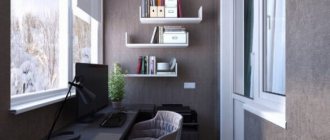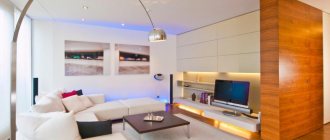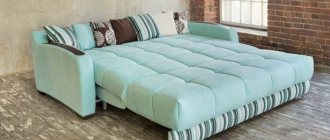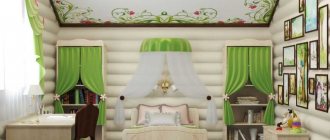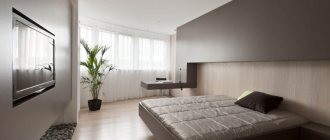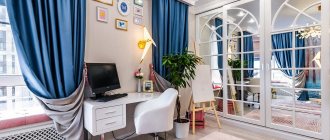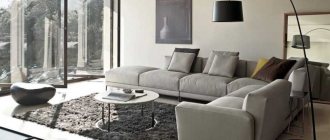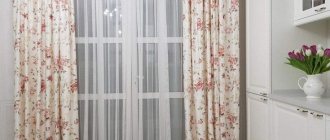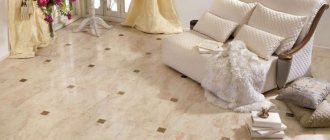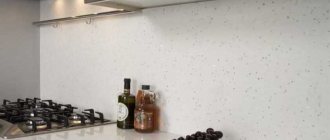Wrought iron balconies in the French style always attract the eyes of passers-by. Craftsmen create real masterpieces of forging from metal on the railings of stairs and balconies from subtle patterns and beautiful colors that fascinate.
Artistic forging is one of the most spectacular options for decorating a balcony.
Pros and cons of wrought iron balconies
Forged balcony railings are often used on small decorative structures, but large terraces, complemented by metal elements in the railing, are not inferior in the elegance of lines and beauty of shapes.
A balcony with openwork forging will give the facade of the house an exclusive and respectable look
Balcony forging has many advantages and goes well with panoramic glazing and brick facades in modern buildings. Forged elements look especially beautiful on small balconies in country house construction and will organically fit into any architectural direction. But the metal structure has both a number of advantages and disadvantages that must be taken into account when ordering a fence.
Design advantages:
- The strength and durability of the product, the fence does not require regular maintenance. It is enough to paint the elements with special paints with anti-corrosion properties.
- Aesthetic appearance, a wide variety of forging shapes and patterns. The opportunity to order exclusive elements according to your own sketch, craftsmen forge compositions of any complexity.
Disadvantages of forged balconies:
- The large weight of the product creates certain difficulties when installing and fastening the structure to the wall of a building.
- The high price of products that are made by hand. Stamped fences do not look elegant and exclusive.
- It is difficult to use the balcony in winter, the area is covered with snow, and the metal handrails are always cold.
But with a sufficient number of disadvantages, forged structures always look impeccable and are in growing demand.
A stylish balcony with wrought iron fencing will add a special charm to your home and show your refined taste
A little history
The sophistication of artistic forging, embodied in balcony railings, was highly appreciated in France since the end of the 7th century. To this day, beautiful wrought-iron balconies, decorated with flowerpots, are the pride of French women, who organize unique competitions among themselves, trying to decorate the space of their balcony more effectively than their neighbors. The rest of Europe did not lag behind France.
In Russia, the authority of blacksmiths who create magnificent forged products has also been at its highest at all times. But forged balconies appeared quite late, initially becoming a property only of royal palaces.
Today, balconies with openwork grilles are increasingly common in our country. The variety of their types and forms, as well as the relevance of the type of forging and ornament, are everywhere becoming the subject of discussion among modern designers and architects.
Shapes of forged balconies
The main shapes that are used in forging fences are radius, they are made in the shape of a semicircle, framing the curves of the site, and are often used above entrance groups with columns. Inflated or curved shapes are made in the form of a curved arc, when the fence partially extends beyond the balcony area. And a vertical type, without bending fencing, which is most often used on the balconies of multi-storey buildings.
The classic option is rectangular balconies, which are quite easy to install and suitable for any facade.
Inflated or semicircular balconies look more original and unusual
All profile shapes can differ in length, ornaments and decorative elements, which craftsmen will offer you in a wide variety.
What are the parameters of forged parapets?
As mentioned, wrought iron fencing can vary in shape, forging method, and style.
Depending on the shape, there are 6 types of profile :
- straight,
- figured,
- semicircular,
- curved,
- vertical,
- rectangular.
Various styles can be used in the manufacture of metal gratings , let's identify the most popular:
- Renaissance. The main distinctive elements are patterns such as vines, flower buds and figures of eight, which are connected by a thread or spiral plexus;
- Byzantine. It stands out for its complex geometric shapes combined with floral patterns and strict style;
- Baroque. It embodies pomp and some massiveness with numerous elements of curls; imitations of flower baskets with flowers embodied in metal are very often used;
- Russian. As a rule, ornaments for this style of forged balconies are made based on traditional folk art, using complex designs and patterns;
- Gothic. This style can be distinguished by a broken arch framed by roses with open petals and a trefoil;
- Modern. It is distinguished by its sophistication and elegance, more often than “natural” elements, has smooth shapes without sharp corners and clear lines. This style can revive the most boring façade;
- Rococo. Here, asymmetrical designs are mostly used; large shells and large flowers can often be seen among the forged elements.
Whatever style of design of a loggia or balcony is chosen by its owner, do not forget that forged railings for a balcony should not contradict the architect’s idea of the general appearance of the building and fit harmoniously into it.
Types of forging
The cost of the fence depends on the forging method. Cold forging, when forging is performed according to ready-made, standard sketches and stamped in large quantities. The hot method is handmade by a blacksmith who works according to the customer’s individual sketches.
Orders by cold forging are completed quite quickly, and the cost of finished products is affordable for many
Hand forging takes a lot of time, but the complexity of the work and the high price are justified by the unique appearance
Manufacturing technology of metal fencing:
- Hot. The elements are heated in furnaces, hot bent into the desired shape and welded into a common structure. Hot artistic forging does not injure the metal, and the design is more durable, but due to the manual work of the master, it is more expensive.
- Cold. According to the sketch, the necessary elements are calculated, which are stamped, bent on machines and welded to the base of the structure. The strength of the metal during cold forging is reduced, but the cost of such a design is several times cheaper than hot processing.
Decoration options for forged fences
In the photo, forged balconies amaze with their beauty and abundance of details, which are used in different styles.
Decorative elements used in forging:
- Openwork patterns are present in almost all directions; these can be complex and intricate curves or simple and laconic curls.
- Particular attention is paid to floral arrangements in the form of bouquets of voluminous roses and peonies or tulip buds; daffodils and daisies look great in forging. Framed by oak, maple, birch and grape leaves, any flower will look perfect.
- The vine is used in many directions; it can be a composition in combination with flowers and natural ornaments.
- A variety of balls and garlands that stand out with other colors in the composition look great in forging; they can be complemented by chains with different weaves.
- Round details with ornaments along the edges in the middle of the composition, from which intricate patterns with flowers radiate.
- A small bird or butterfly, dragonfly or bumblebee can complement the composition.
Examples of decorative elements:
The pattern on the railings can be a continuous canvas or diverge from the center of the composition; this is especially successful in combination with semicircular and curved fences.
Pay attention to the connecting elements and rivets, which in a pompous and fancy pattern should correspond to the overall style. Rivet heads are often made in the form of small curls or leaves, which ensure continuity of the pattern and are completely invisible.
Forging masters provide a huge selection of compositions that you can choose to decorate your balcony. And lovers of the exclusive are given the opportunity to draw a sketch themselves, which will be executed exactly.
What is a French balcony?
Many people have no idea what a wrought-iron French balcony is, but everyone has seen one at least once in their life. This type of platform is called portfnetre in French, which means door and window. The translation accurately characterizes this building; this is exactly what it looks like. The difference from a regular window and door is the forged design of the fence.
Previously, the wrought-iron French balcony looked like a narrow protruding platform with a wrought-iron lattice, on which only one person could fit, and it also served as ventilation for the room.
In modern times, this name is used for panoramic windows from floor to ceiling with access to a small area with a forged fence. From the outside, this element of an architectural structure looks like a three-dimensional basket; this effect is achieved due to its curved shape.
Of course, it does not carry any significant functions, since its small size will not accommodate either things or leisure lovers. Even room ventilation is done differently these days. At the same time, the structure can serve as an original decoration of the building and be decorative. Therefore, it is perfect for those who grow indoor plants, because you can place flowerpots with flowers and plants on it that will perfectly decorate the facade of the house.
Buildings equipped with French balconies look elegant, very elegant and attract attention. From such a platform it is nice to admire the scenery around.
French balcony
